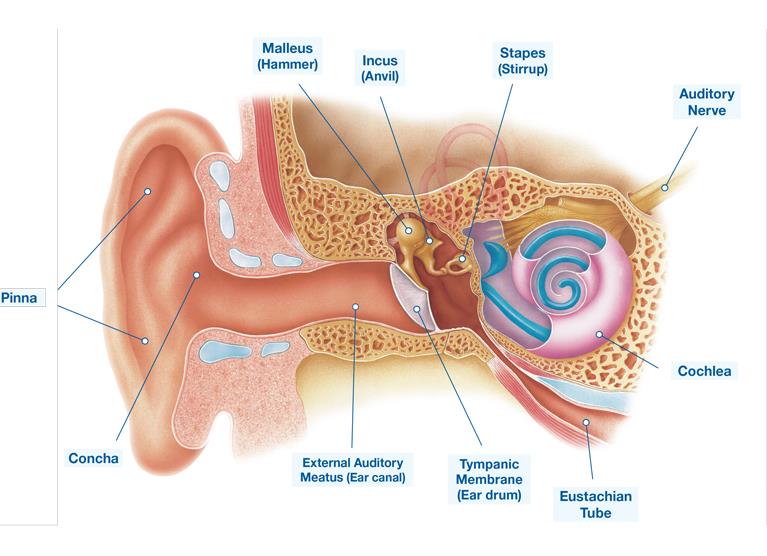How Our Ears Hear
The human body and all it can do is marvelously complex, and our ears are no exception. When you become aware of how intricately designed our ears actually are, you will be that much more amazed by the technology that restores people’s hearing.
Here is the quick step-by-step of how our ears and brain transform sounds into vibrations into the words and noises that give meaning to our lives.
- The human ear is divided into three parts – the outer ear, the middle ear, and the inner ear.
- Each part has a separate function. The outer ear is the visible part of the ear, and its purpose is to direct the sound further inside. The outer ear ends where the eardrum starts.
- The area after the eardrum is the middle ear, which ends at what is known as oval window.
- The middle ear has three bones so small they can be placed together on a penny. These three bones are called stapes, malleus and incus (also called the anvil, hammer, and stirrup).
- The sound waves that enter the outer ear make the eardrum vibrate. These vibrations are picked up by the three bones, which actually form a bridge.
- The last bone, the stapes, transmits the vibrations to the oval window. The middle ear is the place where the sound gets amplified.
- The sound transmitted to the oval window moves into the inner ear, a network of fluid-filled passages and tubes that run through the temporal bone of the skull. This network is often referred to as the bony labyrinth.
- Movement of the fluid in the inner ear causes changes in tiny structures called hair cells.
- Hair cells near the wide end of the snail-shaped cochlea detect higher-pitched sounds, such as an infant crying. Those closer to the center detect lower-pitched sounds, such as a large dog barking.
- This movement of the hair cells sends electric signals from the inner ear up the auditory nerve. The auditory nerve carries this electrical signal to the brain, which turns it into a sound that we recognize and understand.
Interested in learning more about the functioning of your ears and what to do about hearing loss? Browse our hearing loss content.

Take Online Hearing Test
Take our free at-home hearing loss test as a first step on your journey to better hearing.

Book Your Free Appointment

Reviewed By
Kathy McGowan, AuD CCC-A, Doctor of Audiology
Kathy McGowan is the Manager of Managed Care Programs with Beltone Corporation . Kathy worked with the Professional Development Training Team as well as the Operations Team and Beltone Corporate Retail for 8 years before being promoted to her current position. Prior to joining Beltone Corporate, Kathy worked for 10 years as an Audiology Manager in a private practice. She has worked in many settings as an Audiologist including an ENT practice, a hospital, an Optical and Hearing Company, and in the Military, retiring as a LtCol. Kathy earned her Bachelor’s in Speech and Hearing and Master’s in Audiology from Ohio University in Athens, Ohio, and went on to receive her Audiology Doctorate from A.T. Still University School of Health Sciences. Kathy is currently licensed in seven states.

